On April 15th I partnered with the Society of Illustrators to do an Art Out Loud Online portrait painting, live on Instagram. At the same time, I brought my SmArt School class in to watch, and then I finished it privately during class time over the following hour.
I couldn’t keep up with the questions from attendees watching, so I hope to address a number of them here as a followup.
For the demo, I wanted to portray someone familiar so the audience could understand where I was going with the paint. That way, they’d know if the likeness was off or if I was just phoning it in. (Forgive the pun.)
I chose Ripley, from the film Alien, as my subject. Like so many others, I’m a fan of the character and Sigourney Weaver’s portrayal. I used a frame shot. It’s not just a picture of Ripley, but a moment of her character.
As a painter, portraits provide an incredible learning arena for understanding value, form, contrast, edges, paint mixing, color temperature, and stroking. All the basics for creating any painting from there. It is a hallmark of a painter’s skills, where the basics coalesce to achieve a character’s image.
A nice, fancy way of saying, portraits are difficult, so get good at them. The industry still has many reasons for using good portraiture, and if you can do faces well, you’ll have work.
1. Likeness vs copy.
Portrait paintings are not mindless reproductions of photographs. It is not about trying to copy what’s in the photo, but rather using the photo reference as a guide to the likeness of a character.
Think that’s splitting hairs? Guess again. A copy is a recording of the same object, in this case, a photo. A likeness is reading the photo to understand how the character’s face works, from which to build a portrait. It takes reading what the photo has recorded in order to project what the overall character is saying through their face. It is your job to find that and show it through the paint.
For example, in Ripley’s photo her eye shapes are quite hidden by the shadows created from the angle of light striking the eye. I did not record all of what was in the photo but generalized the shape of her eye based on two things: knowledge of how eyes are shaped, and the subtle shifts in form that are Ripley’s expression. In this particular expression, she’s shocked by the realization that the alien is actually there with her in the escape capsule. Note that the white space above the pupil is higher than normal. If I didn’t capture that, her expression would be far less excited.
Value and shape, and yes, rhythm is everything.
I also used the values from the photo to generally capture the colors, but those values had to be accurate to the colors I was using in the painting. In other words, they had to match my paint, not the photo. This is judged on the fly, once enough values and structure have already been laid down.
That’s why I teach my students in SmArtSchool to put down pigment and leave it there. Not to judge too soon whether it’s correct or not and start overpainting. You won’t know until enough pigment is down to compare. You adjust lighter and darker strokes from there.
2. Paint adds character.
The quality of the paint, in the way it’s applied and how thick or thin and how variable, lends character to the actual likeness. This is a personal expression by the artist. Whether someone chooses to capture the likeness in broad strokes or tiny, angular strokes or soft, bold application or fussy rendering, any approach will not only add a voice to the portrait, but also drive the expression of the subject.
I chose my palette knife approach for Ripley carefully. I was worried that chiseling strokes wouldn’t be the right approach for soft feminine skin. Then I thought of her character. Tough, rugged, thinks-on-her-feet Ripley could withstand my sharper strokes, and I could then go in to soften certain passages to blur edges in and out, adding a touch of femininity and also giving the illusion of her skin behind the transparency of the helmet’s faceplate.
Overlapping values; overlapping brushstrokes. (…and you thought I wouldn’t mention ‘overlap’ in this post.)
3. Distortion vs realism.
There is a natural distortion that occurs in every painting. Very few paintings are accurate to what we see with our eyes verses what the camera records. Again, a painter is looking to create a piece to communicate beyond a mere record. A painting is still an expression. That expression goes beyond accuracy.
We tolerate inaccuracies in paintings because of two reasons. One, we simply know it’s not a technical reproduction; second, we accept that the painter is telling us something as an expression. Paintings are not poor excuses for a lack of a camera.
As viewers we know when the artist is going for a reproduction of a photograph because they follow every nuance and distortion in the photography as if this adds to the quality of the work. At this point, they are simply copying a photograph. And that’s ok if one is training or working to study how to use photography as reference. Sometimes photo anomalies can be used to great affect. Personally, I like more expression in my work and I guide my students to achieve something more than just a recording.
4. Rehearse the painting.
Practice, sure, but train more. Training takes intense focus. So rehearse how you see yourself laying down the pigment. Can you see yourself mixing the paint and then applying? Of course you can. We all can. It’s the rehearsal, though, of how those layers and strokes go down that guides how we see our finished painting.
It’s also important to visualize the finished piece. What are you trying to catch overall? What parts are you salivating to capture? Watch yourself paint them. Plan your approach, plan your mixtures and color, plan your edges. Go through the motions and create it mentally first.
Yes, yes, there’s plenty of room for experimentation and failure (trust me) and stream-of-consciousness painting. But not early on, not while you’re trying to learn. Know this going forward: the more you train, and the more you paint with focused attention, the faster you will understand how paint works and will be able to bring out your voice.
5. Voice vs style.
It’s been questioned a billion times by all of us learning to paint: ‘They tell me I have to have a style, but how do I get one?’ I was perplexed by this as well for many years, through many experimentations. But somewhere inside, some deep instinct understood how I like paintings to look, what appeals to me, and from that I gleaned how I’d like mine to look. But honestly, that didn’t help either. How was I supposed to find it?
Eleven years into the business, I still had no real clue as to what my painting style was like. And so I did a few paintings, with no art director involved, that were nothing but my approach. I beat on them until they succumbed to my will, or until I could see the paint acting the way I wanted to pursue. It slowly emerged from there, one painting at a time, painting after painting.
Then I realized, you don’t find your style; your style finds you. In other words, you already have a style. It just needs to be coaxed out and trained. The reason it isn’t clear is because you’re confused as to which voice to listen to.
What you’re after is your unique voice. The good news is, you already own it. It is hidden in a chorus of voices, all competing for attention. We try watercolor and gouache; we try oil and acrylic; we want to sculpt and carve and draw and animate and photograph. It’s important to try them all. But soon you must quell the competing voices to isolate and hear your own. Once you listen to it and determine its timber, you can follow it.
Later on, you’ll want it to blend with your chorus inside again, in order to get your singular voice to grow and evolve. But that’s another post.
Simply, pay attention to the art you are attracted to. It reflects what’s inside.
6. Communication.
That’s what we do as artists. Communicate. Or did you think we generate something altogether new and different? For the wonderment of Art? Producing work that are experiments of color and form? Theses of why Art is important by rejecting all that has been created before us so we can shock the world with the new?
We are communicators. Our effort is to speak to an audience who is us. It is what the cave painters were doing. It is what the myriad of cultures have done from the beginning. We speak and create and show and connect and link and uphold and commiserate with the observer. We reflect what they already know deep inside but maybe, just maybe, cannot express themselves. They’ll know it when they see it and when you touch them, you have effectively leapt across the eons of time and the tens of thousands of years of the human condition.
A portrait is not a recording. A portrait is not a copy. Eventually every portrait is a glimpse of character from the past. A portrait is a reflection of a species known by each of us. Celebrate the connection.
——-
If you have other questions, put them in the comments!


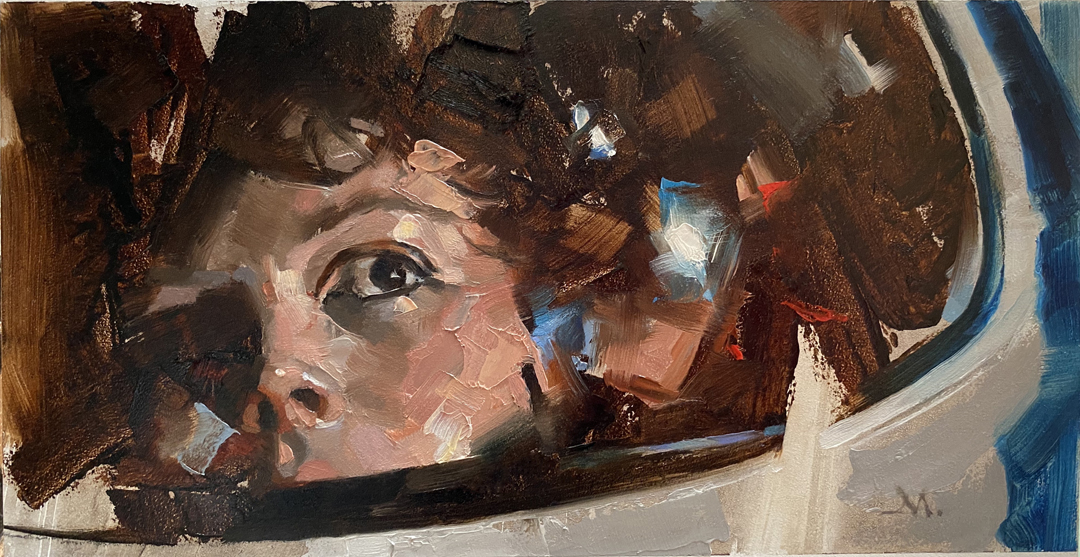

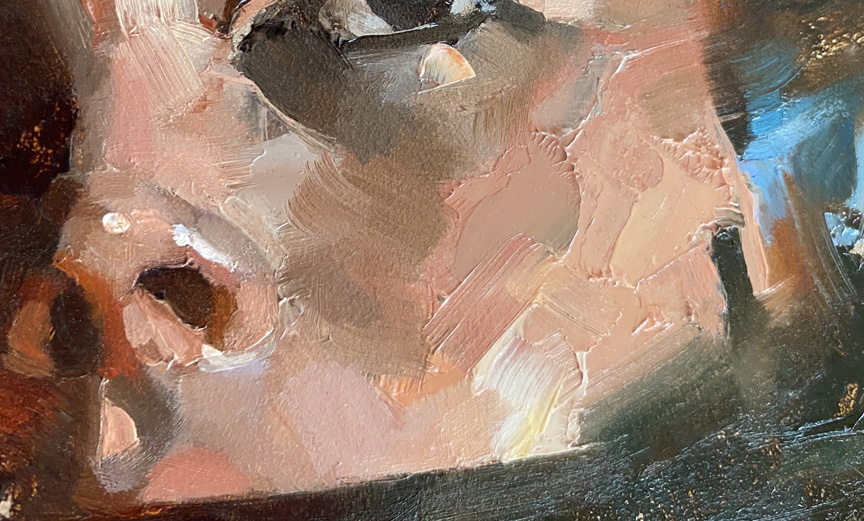
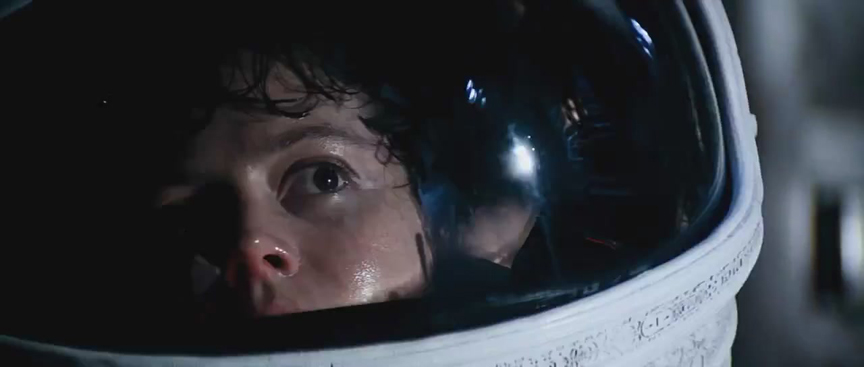

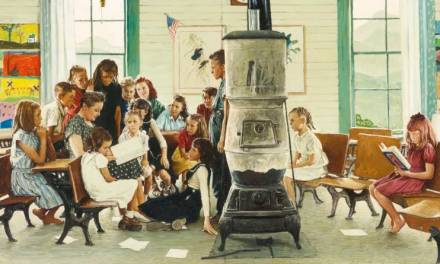
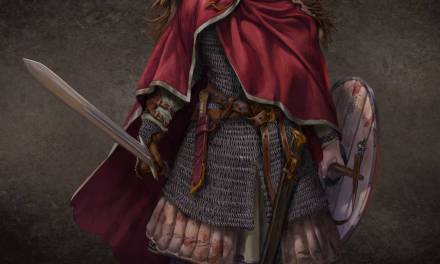
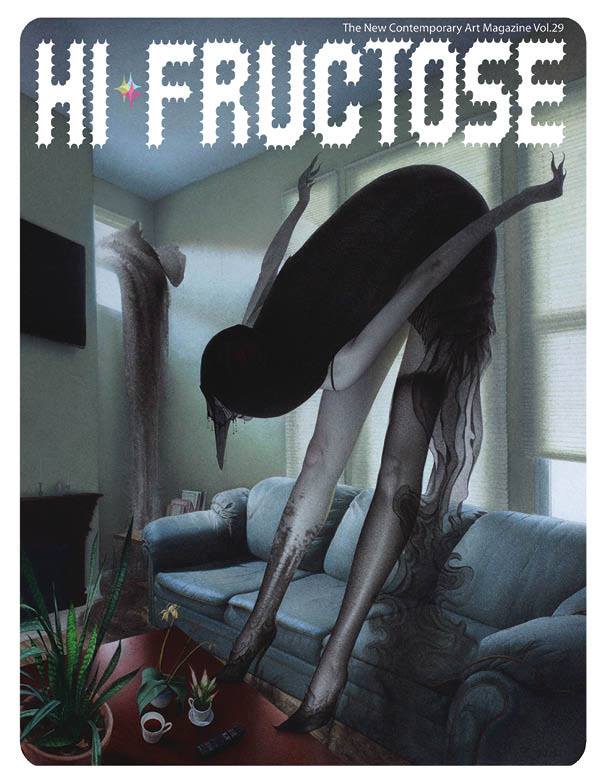
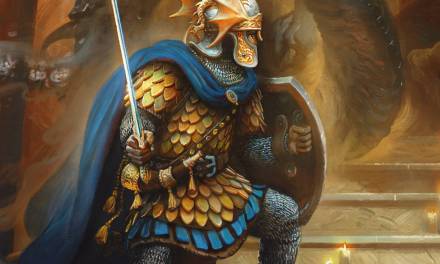
Great post Greg! But I paid for 10 Things, not 6. Where are the other 4??? do I get a 40% refund? 🙂
Dang! I must’ve miscounted. Check’s in the mail, Dan!
Hi Greg,
I loved the live demonstration portrait of Ripley, I hope you can do more of these in the future as they are inspiring to watch, I took 2 of your classes at the Norman Rockwell Museum last winter and was just in awe how easily you paint and build up shapes and textures. Your palette knife work is magnificent to watch as well, makes me want to try to use the knives more when I’m painting.
Do you prefer canvas or gessoed board as a surface to work on? how many hours do you spend painting in a day? how many paintings do you work on in a day and how much time did you put into this Ripley portrait to complete it? I’ve been spending about 2-3 hours on mine and that seems to work well for me, just wanted to check in with the master! 🙂
Thank you!
Brian
Hey Brian! Thanks for the compliments! As for canvas vs board, I’ve tried both and they seem to work fine. It just depends on the effect you want. When I work on smaller portraits like Ridley, I like to use a small triangular knife. It’s awkward to use, but gives me good shapes and unexpected paint strokes. It feels good to have a firm surface under the knife.
When I work on canvas it’s pre-primed, so it’s not on stretchers. I lay it on the drafting table and that gives me the firm ground to work on. I like the firmness underneath because I can control the knife movements better.
There’s some really great pre-primed rolls of canvas on the market. Very smooth stuff, and very lumpy or gritty. That’s all a matter of personal preference, and how you want the overall final effect to work.
Thank you Greg!
It’s been awhile since your last “10” post and I always look forward to them. As an college art teacher I find that you articulate very well that which I often stumble over in words. Your thoughts reinforce my thoughts and give another voice that I’m often looking for for my students. Thanks. I know these posts take a lot of valuable time and I hope that readers will appreciate what you put into these. This post builds on all the others and is my new favorite.
So nice to know this, Brian! It has taken me years to penetrate the complexities that we get from so many places all at once starting out. To simplify them, demystify them, is what I’d always wanted for my own progress. Time for them all to come into the light!
Any suggestions for 10 Things posts going forward is welcome, thanks!
Thanks sharing this knowledge Greg. It’s so great to see the importance of not mindless copying mentioned by such a master as you. It’s worth spreading this kind of knowledge to the general public.
I blush. Thanks, Sebastian!
Great post, Greg- informative as everything in this series. But more importantly, DAMN that is a good painting!
Hah! Thanks, Sidharth! It felt good right from the start, so I’m pretty happy with it. As always, there are things to change and shift. Never finished it seems, even if you’re working on a graphic, there’s always some curve or angle that can be adjusted…
“ Later on, you’ll want it to blend with your chorus inside again, in order to get your singular voice to grow and evolve. But that’s another post.“
I need this, Greg! Thanks for all the great posts!
Another great post, and agreed the person need to feel right not be a photo. All spot on advice. Though I do want to read a 10 things post for this. ” Later on, you’ll want it to blend with your chorus inside again, in order to get your singular voice to grow and evolve. But that’s another post.” I am waiting for this master class! Hope your working on that one. Stay safe out there!
Your article was the missing cord to my symphony in an artful connection way! Thank you for sharing your wisdom. I’m self taught and always looking for ways to improve and find understanding. Your article created that “light bulb” moment for me!! <3 Diana
That is so great, Diana! Thank you! Y’know, I consider myself self-taught, even tho I went to art school. In my time there, they worked hard to prevent us from learning basics. They thought it all was dead. And they hated, hated, hated illustration. Thought it was “selling out.”
Even tho their idea of “real art” was selling in the millions of dollars, they thought my interest in painting and drawing and that nasty illustration field was prostituting myself.
I learned in spite of them. I learned because I wanted to paint. I learned because I wanted to tell stories, inspire, and communicate.
Follow your heart!
Hey y’all…thought I’d address the two questions about coming back to listening to the chorus. It’s basically about being versatile at the beginning of one’s career. Being able to work in different mediums, exploring different techniques and styles. Then we have to focus. Narrow the exploration down to a single voice in order for the work to gain attention, and build off that attention.
Once you’re getting work and developing that voice as your own, you’ll be able to grow with it. Innovate it. This keeps your voice attentive to not only the skills it gains, but also the changes and shifts of the audiences’ tastes and your own. Simply put, to keep your particular style and qualities advancing.
The way to keep it growing is to listen once again to that chorus of voices inside, to allow it to expand and develop further. We diligently study the work going on around us and from the past. At the same time, we must also look inside and listen to those intuitive voices that are hard to discern at times, but are always there.
Hope that helps clarify for now!
Hey Greg, the moment I saw you post you were doing this for the society of Illustrators I knew I just had to watch.
As always it’s great fun watching you paint, and very instructive. And then you come along with an article to follow it up. You are really spoiling us.
Thanks so very much, I just cannot express how much I enjoyed watching this. One thing is certain, I don’t know when yet, but I’ll be back in your class (and I’ll be checking in Donato’s class as well then) in the future.
See you buddy ,
Christof
“Later on, you’ll want it to blend with your chorus inside again, in order to get your singular voice to grow and evolve. But that’s another post.”
…go on, I’m waiting 🙂
I enjoyed a lot your demo on Instagram, i was the one that asked about “where” to find the essence in a painting and when we would have have a new “10 things…” article, so it’s great to see a new “10 things…” article about painting portraits, Greg! 😀
Watching you painting Ripley i had the impression you were thinking to the shapes and planes of her faces, then smoothing where no edge was required: considering the planes it’s always something i forget, i’m trying to add it in my technique and i have to say it’s helping me a lot.
It’s great to hear that it’s helping, Luca! With the pandemic, I’m trying to plan for a bunch more “10 Things…” posts coming up. Stay tuned.
And Tommy…get back to work! Well, ok…I may just have to include that point in a post coming up.
Btw, I have another demo at the SOI’s Instagram page (@soi128) this coming Monday. Hope you can watch. 2pm, 1 hour.
Please please upload the video somewhere! I saw it on insta and loved every minute but it’s been taken down.
Thanks in advance
I have just discovered your posts, Gregory, wonderful combo of your personal intent, with practical tips on how to get there! I was listening to Suchitra Bhosle talking about ‘making good shapes’ with portraits, which confused me, as I fuss so terribly about the little noodley details of likeness. But this post expanded on that topic, very valuable reading! I have watched demos of terrific portrait painters, who can do a darn nice face, then they comment about how they are not too worried about getting the likeness, that is not the purpose. I’m always disappointed, and wonder ‘well what if you Did want to capture the likeness, what extra steps would that entail?’ But you have helped clarify this better for me, much appreciated!